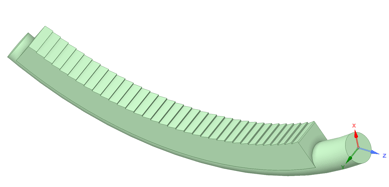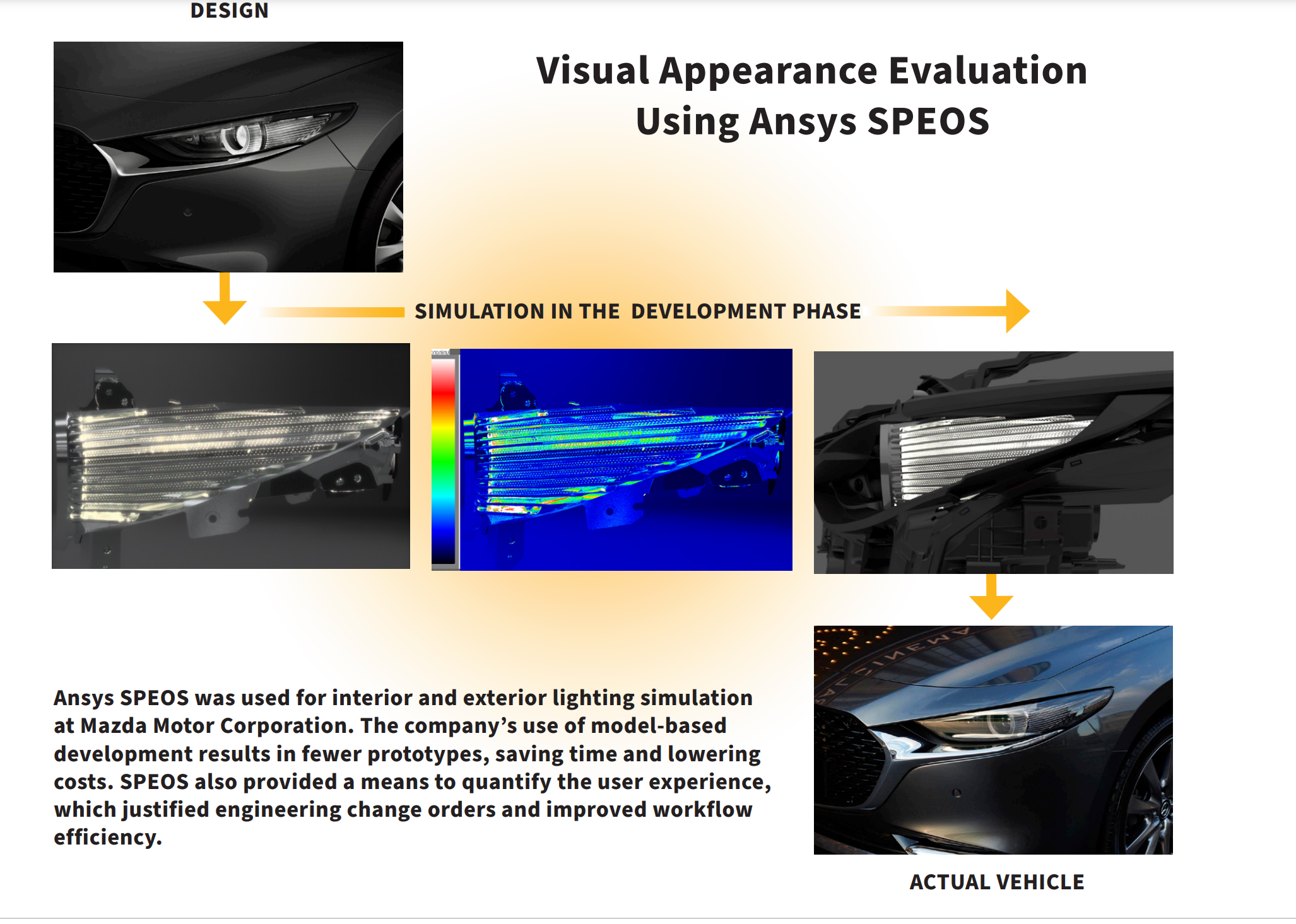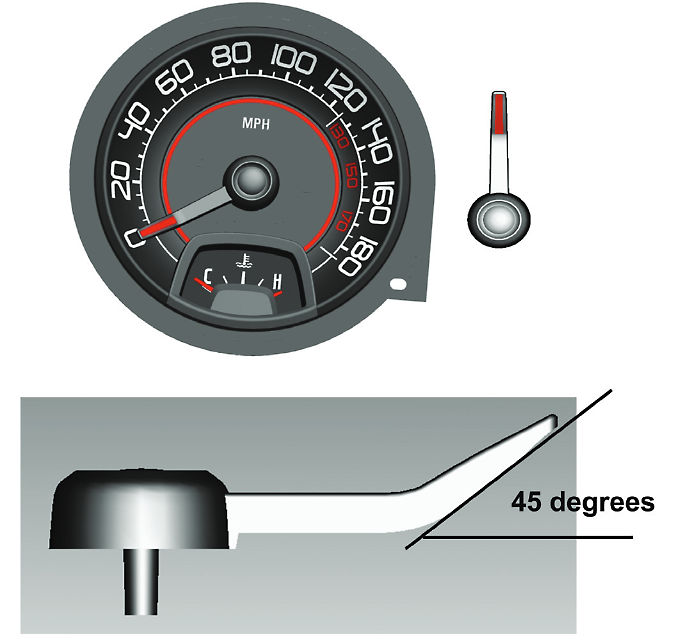Light guides are essential components in various industries, offering efficient and controlled light distribution for diverse applications. ANSYS SPEOS, a cutting-edge optical simulation software, is used in this blog to simulate the light guide. Additionally, we introduce a comprehensive tutorial on creating a light guide using SPEOS, available on our YouTube channel.
Industry Insights, Market Analysis, and Applications
There are a variety of uses for light guides due to their versatility and efficiency. Among the most notable applications are:
- Automotive: Improving lighting systems for headlights, taillights, and interior illumination, ensuring uniformity and energy conservation. ANSYS SPEOS enables accurate simulation of lighting performance and optimization of designs for maximum efficiency
- Medical Devices: Aiding minimally invasive procedures such as endoscopy and laparoscopy, as well as delivering light effectively in phototherapy and laser treatments. Increasing medical technology demand and an aging population are expected to drive growth in the medical device market, emphasizing the importance of light guides. SPEOS allows precise light propagation simulations, ensuring effective light delivery for various medical applications.
- Consumer Electronics: Providing even backlighting for devices like smartphones, tablets, and TVs, enhancing the overall user experience. The consumer electronics market continues to evolve rapidly, with constant innovations in display technologies, making the development of efficient light guides crucial for maintaining competitiveness. SPEOS aids in creating high-quality, energy-efficient backlighting systems for improved user experiences.
- Architectural and Commercial Lighting: Offering energy-efficient and visually appealing solutions for signage, accent lighting, and general illumination purposes. The growing awareness of energy conservation and the adoption of LED lighting in various industries are expected to boost the demand for light guides in architectural and commercial lighting applications. With SPEOS, designers can optimize light guides for uniform illumination and energy savings.
Creating a Light Guide in ANSYS SPEOS
The ANSYS SPEOS platform streamlines the process of designing light guides, enabling users to simulate and optimize their systems. In the first step of the tutorial, you will learn how to define the geometry of the light guide. In this example, we have used a curved light guide. To extract the light from the light guide, we employed a prism, as demonstrated in the accompanying picture.

Following the initial step, you will learn how to set up the optical properties, such as surface reflectivity and material properties. Next, you will discover how to define light sources, including their position, orientation, and intensity, as well as how to assign optical properties to the geometry and light sources. Finally, you will learn how to perform ray tracing simulations and analyze the results in order to evaluate the light guide's performance
For a comprehensive step-by-step tutorial on creating a light guide using SPEOS, refer to the ANSYS website article:
Creating a Light Guide in SPEOS (https://optics.ansys.com/hc/en-us/articles/8170963942291-Creating-a-lightguide)
Additionally, you can watch the detailed tutorial on YouTube:
Real-World Light Guide Application: Continental's Guiding Light
Next, we highlight a real-world application of light guides in the automotive industry. Continental, a leading automotive supplier, utilized ANSYS SPEOS and light guide technology to create innovative and efficient lighting solutions for vehicles. Utilizing light guides, they achieved a balance between performance, energy efficiency, and aesthetics.
The case study, titled "Continental's Guiding Light," outlines the company's approach to designing their advanced lighting systems using ANSYS SPEOS.
Some key technical aspects of the case study include:
- Optical design: Continental's engineers used ANSYS SPEOS to create complex optical surfaces, optimize light extraction efficiency, and ensure uniform light distribution across the entire light guide.
- Material selection: The team explored various materials for the light guide, such as polymers and glass, and carefully considered their optical properties, durability, and manufacturing constraints.
- Thermal management: The integration of LEDs and light guides required careful consideration of thermal management to maintain the longevity and performance of the lighting system. ANSYS SPEOS allowed engineers to simulate and analyze thermal behavior, leading to informed design decisions.
- Compliance with regulations: The automotive lighting industry has strict regulations to ensure driver safety. Using ANSYS SPEOS, Continental's engineers were able to simulate the photometric performance of their design and make necessary adjustments to meet regulatory requirements.
Optimization with optiSLang:
Continental leveraged optiSLang, an advanced optimization software, to automatically search for the best design parameters and improve the light guide's performance.
By implementing ANSYS SPEOS and optiSLang, Continental successfully developed an innovative lighting system that met all performance, efficiency, and aesthetic goals. This case study showcases the power of light guides and ANSYS SPEOS in automotive lighting design.
You can dive into the case study for a more comprehensive understanding of Continental's approach and the benefits of using light guides and ANSYS SPEOS in their design process: Continental's Guiding Light.
https://www.ansys.com/advantage-magazine/volume-xiv-issue-2-2020/continental-guiding-light
Mazda Sees the Light with ANSYS Speos
Mazda, the Japanese automaker, has been known for its innovative approach to design and engineering. Recently, the company has been using ANSYS Speos software to improve the performance of its headlights and taillights. Mazda's commitment to optimizing its lighting systems with ANSYS Speos includes the use of light guides to achieve a uniform and attractive lighting effect.
An ANSYS Speos newsletter article titled "Mazda Sees the Light" highlights the company's use of the software. Mazda's headlights and taillights are simulated using ANSYS Speos in different scenarios and environments.
Mazda uses ANSYS Speos to optimize the performance of its lighting systems, resulting in improved visibility and safety for drivers and passengers. Mazda also uses the software to comply with lighting and emissions regulations.
ANSYS Speos is also used by Mazda to develop efficient and environmentally friendly lighting systems. Mazda contributes to a more sustainable future by reducing energy consumption and using more sustainable materials.
Mazda's use of ANSYS Speos is just one example of how advanced simulation software drives innovation in the automotive industry. It is through simulation that companies like Mazda are able to improve their products and provide their customers with a better driving experience.

Conclusion
Light guides play a crucial role in modern optical systems, enabling efficient light transportation and offering design flexibility. By understanding their applications across various industries and leveraging the power of ANSYS SPEOS, you can create, analyze, and optimize light guides to improve the performance of your optical systems. With the right tools and industry insights, you can contribute to the growth and innovation in the world of optical technology.
Apr 18, 2023 1:45:54 PM

